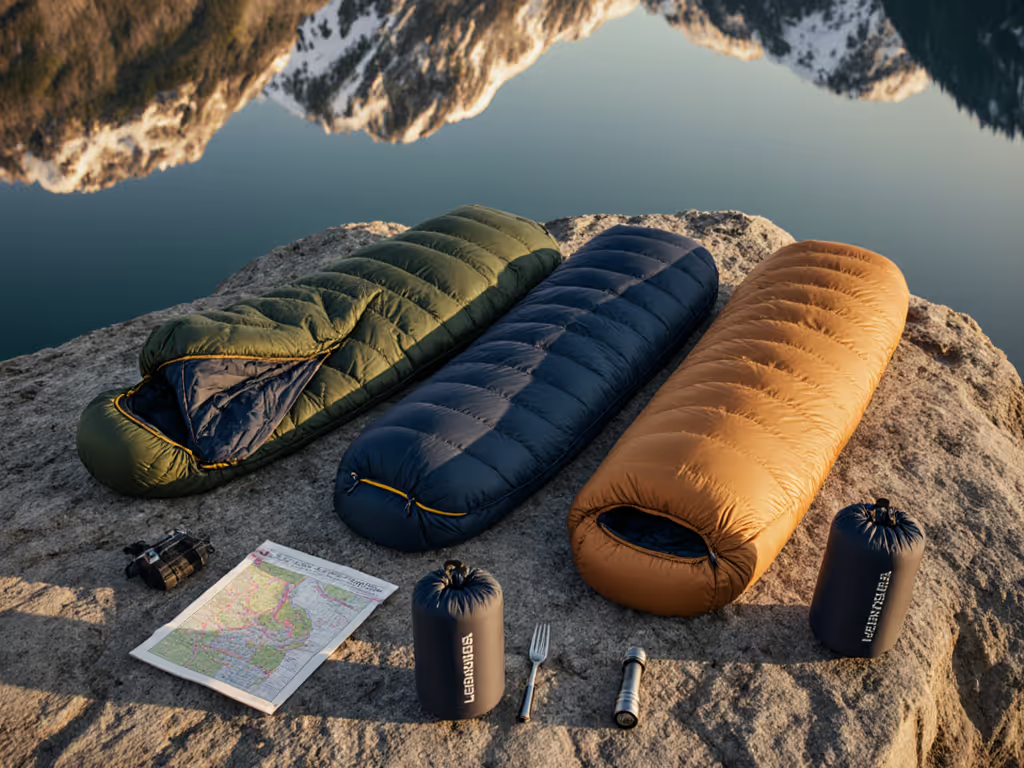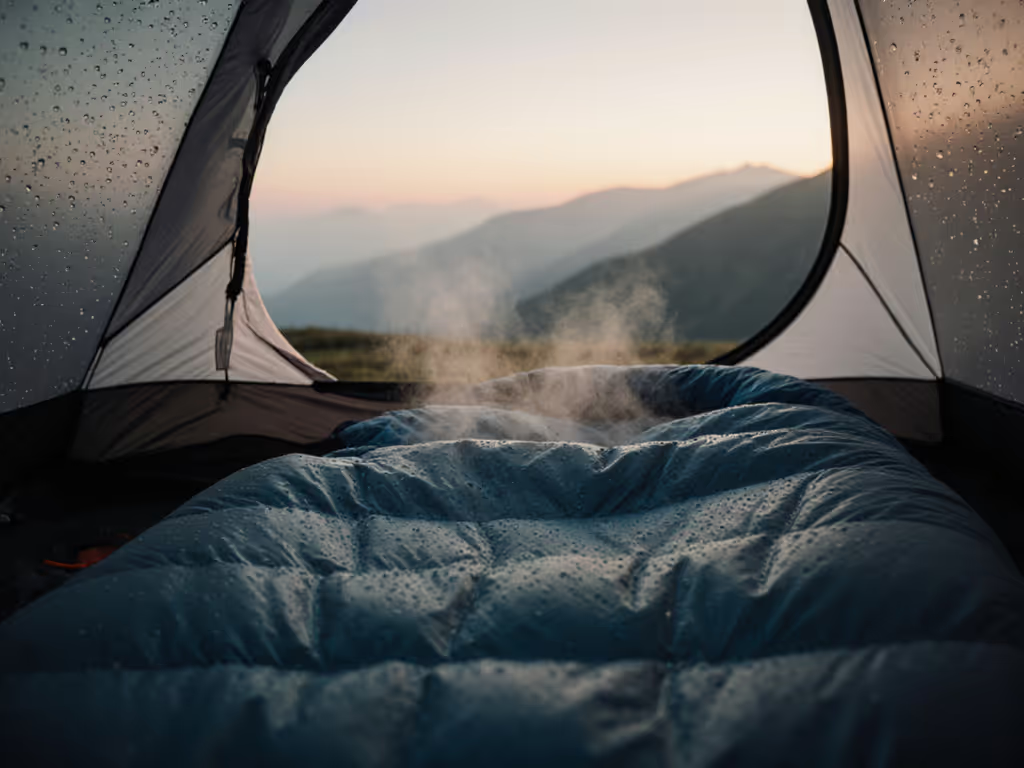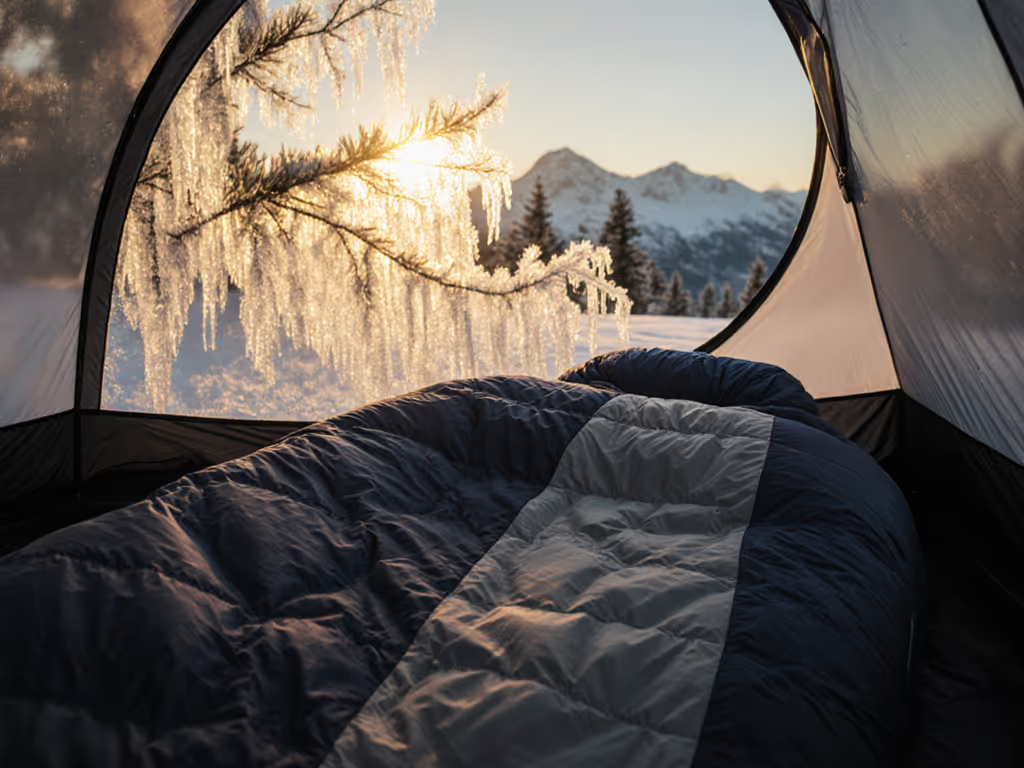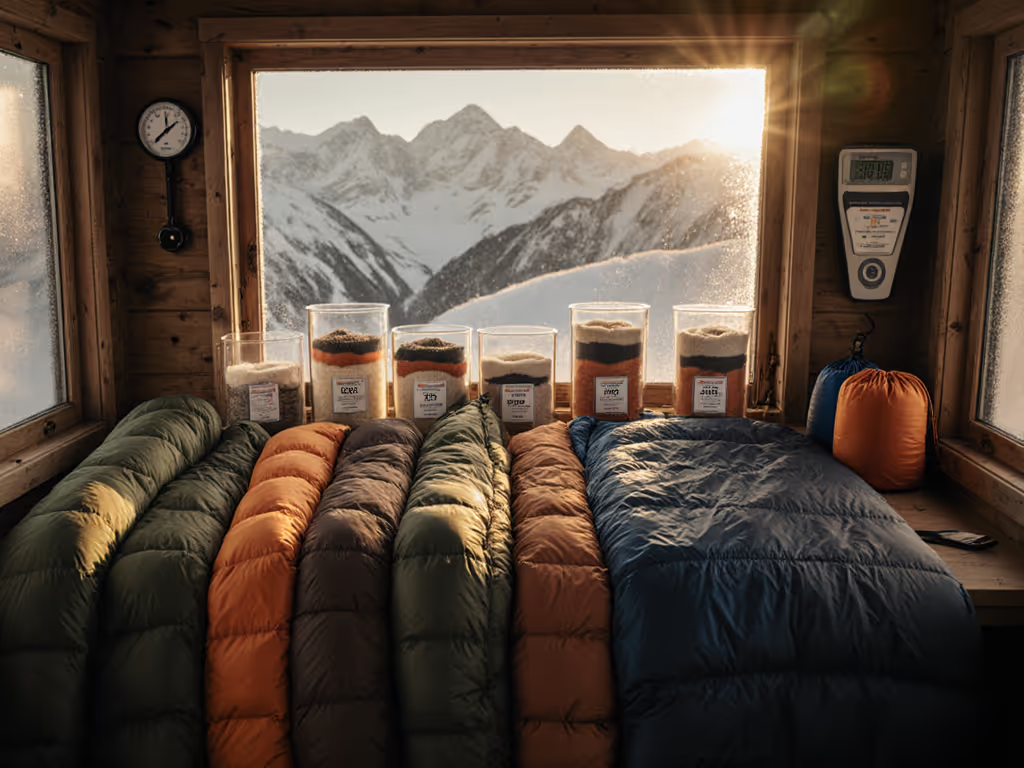
Decode Sleeping Bag Ratings: Real Warmth, Fit & Eco Picks (2025-11-10)
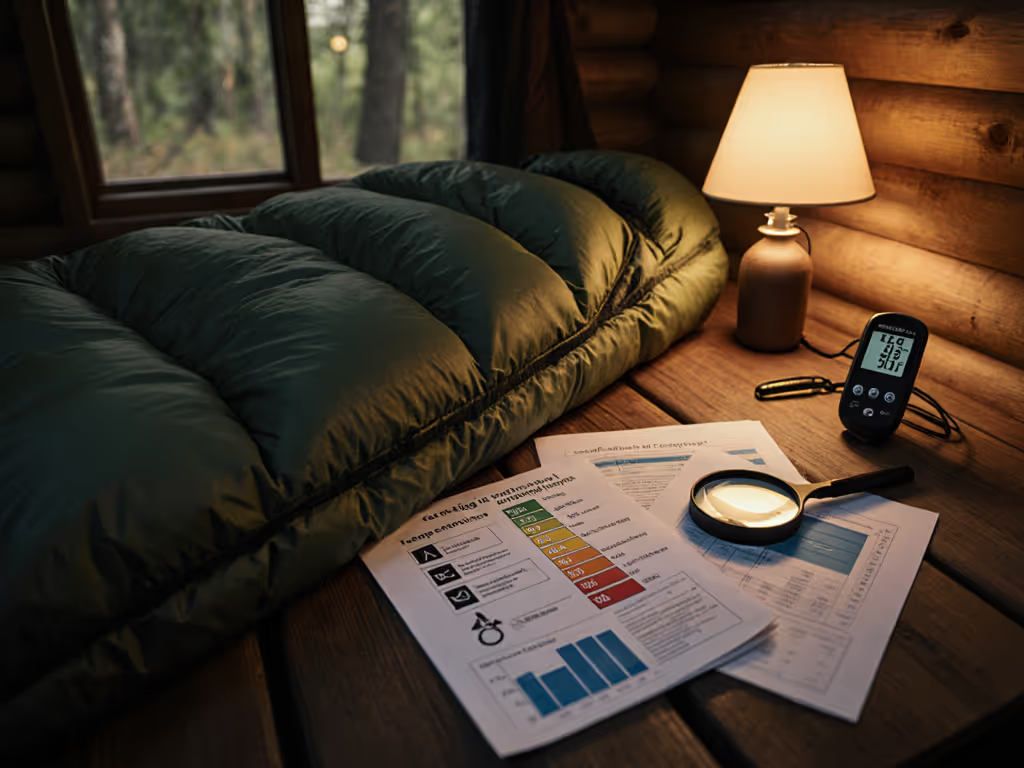
Decode Sleeping Bag Ratings: Real Warmth, Fit & Eco Picks (2025-11-10)
Decode Sleeping Bag Ratings: Real Warmth, Fit & Eco Picks (2025-11-10)
You want a sleeping bag that is warm, light, and dependable, yet the specs often feel like alphabet soup, which is exactly why this blog post for 2025-11-10 exists to be your clear, trail-tested guide. In plain language, we will translate lab ratings into real-world comfort using Backpacker Sleep’s Real Warmth Index and embedded temperature calculators (and we publish our testing protocols), show how insulation behaves in different weather, and explain how your sleeping pad and fit can add or subtract degrees. Throughout, Backpacker Sleep brings you practical advice and research-backed insights so you can choose confidently and sleep deeply, whether you are thru-hiking or car camping with friends.
Many backpackers say the hardest gear decision is the sleeping bag, because one mistake compounds across a cold night, a wet morning, and tired miles. How do you balance warmth against packability, or ratings against the way your body actually sleeps? We will break down the decisions into simple steps, offer scenarios you can mirror, and link them to the testing methods that brands use so you understand why numbers move. By the end, you will know exactly which dials to turn for your climate, your metabolism, and your ethics.
Your blog post for 2025-11-10 Guide to Sleeping Bag Warmth
Most modern bags list ratings derived from ISO [International Organization for Standardization] 23537 and older EN [European Norm] 13537 protocols, which use a heated manikin and controlled conditions to estimate how a typical sleeper feels at set temperatures. You will see three labels most often: Comfort, Limit, and Extreme, where Comfort is the approximate temperature at which a cold sleeper rests well, Limit approximates a warm sleeper curled up, and Extreme is a survival-only threshold. Because labs assume a standard base layer and a specific pad with a defined R-value [thermal resistance value], real-world weather, wind, humidity, and your pad choice can meaningfully shift your experience. Think of the number on the tag as a calibrated starting point, then adjust using the variables you control. For a deeper dive into interpreting lab labels in real weather, read our temperature ratings explainer.
| Label or Factor | What the Lab Assumes | How It Feels Outside | What To Do |
|---|---|---|---|
| Comfort | Neutral sleeper on back, standard base layers, low wind | Cold sleepers may still feel chilled near this point | Choose Comfort at or 3 to 5 °F (≈1.5–3 °C) warmer than your coldest night |
| Limit | Warm sleeper curled position, efficient posture | Side sleepers or restless movers lose warmth faster | Use Limit only if you know you are a naturally hot sleeper |
| Extreme | Short-duration survival threshold, significant stress | Not a comfort rating and not for planning trips | Ignore for purchasing unless assessing emergency margins |
| Pad Baseline | Midrange R-value [thermal resistance value] assumed by test | Too-low R-value [thermal resistance value] can erase 5 to 10 degrees of warmth | Match pad R-value [thermal resistance value] to night temperature with margin |
Outside the lab, moisture and wind rewrite the script, which is why your camp choices and system synergy matter as much as the tag. A steady breeze can flatten loft and steal heat, while 80 percent humidity slows drying and can reduce down loft by a third, with synthetic fills holding performance better when damp (see our moisture-resilience lab and field tests and our published testing protocols for the measurements behind these figures). Caloric intake, hydration, and fit also matter because your body is the furnace; if you underfuel or create large dead-air spaces, you will feel colder even in a well-rated bag. Backpacker Sleep explains these interactions with simple checklists and field notes so your expectations match the night you actually face.
Down vs Synthetic: Pick Insulation That Matches Your Weather
Down is prized for high FP [fill power] loft and class-leading warmth-to-weight, compressing tiny for long miles and rewarding careful users in dry or reliably sheltered conditions. Synthetic fibers, often recycled polyester, mimic loft and keep more warmth when wet, which is a serious safety margin in shoulder seasons or maritime climates where tents bead with condensation. Hydrophobic down treatments and advanced baffle designs have narrowed the gap, yet moisture management and drying time still tilt certain trips toward synthetic. Get the full comparison in our down vs synthetic guide with hydrophobic down testing. If your itinerary includes repeated wetting, limited sun, or heavy dew, synthetic insulation can act like a forgiving teammate, whereas arid, cold, and high-mileage trips let down shine.
Watch This Helpful Video
To help you better understand blog post for 2025-11-10, we've included this informative video from 김학중 목사_꿈의교회 미디어교회. It provides valuable insights and visual demonstrations that complement the written content.
| Feature | Down | Synthetic | Backpacker Sleep Guidance |
|---|---|---|---|
| Warmth-to-Weight | Excellent, especially with high FP [fill power] | Good to fair depending on fiber type | Choose down for long, dry treks where grams matter most |
| Wet Performance | Loft drops when damp; slows drying | Retains more loft and heat when wet | Pick synthetic for wet coasts and humid forests |
| Packed Size | Very compact | Bulkier for same warmth | Down fits small packs better |
| Durability | Long lifespan if cared for | Loft can decline after compressions | Rotate storage sacks and avoid long compressions |
| Cost | Higher for premium loft | More budget friendly | Allocate budget based on trip frequency and climate |
| Eco Options | RDS [Responsible Down Standard] certified down available | GRS [Global Recycled Standard] recycled fibers common | Backpacker Sleep highlights verifiable certifications |
As a rule of thumb, think in terms of error tolerance and recovery time, because some mistakes unwind easily while others linger through the next day. Down gives unmatched comfort per gram when protected from soaking and paired with smart campsite choices, like pitching under tree cover and venting to reduce condensation. Synthetic becomes the steady anchor on trips where repeated dampness, river spray, or a coastal storm cycle are part of the plan, and its resilience buys you safety while you still refine skills. Backpacker Sleep’s comparison reviews weigh these trade-offs for distinct climates, so you can pick without second-guessing at 2 a.m.
Fit, Pad R-Value [thermal resistance value], and Humidity: Build a Warmer System
![Illustration for Fit, Pad R-Value [thermal resistance value], and Humidity: Build a Warmer System related to blog post for 2025-11-10](https://admanager-ai.s3.us-east-1.amazonaws.com/seopro-blog-inline-images/10cd1270-06aa-44ef-9afb-3f01aa88c923.png)
Fit is the quiet variable that decides whether your bag’s insulation can do its job, because excess volume creates cold voids you must heat with your body. A bag cut with a sensible shoulder and hip girth feels snug without compression, a shaped hood traps heat, and a well-placed draft collar reduces leaks when you turn. If you are broad-shouldered or a side sleeper, consider roomy mummies or semi-rectangular cuts that allow natural movement, and remember that cinch cords, zipper baffles, and footbox volume are not just features but thermal controls. Backpacker Sleep measures real internal dimensions and explains how fit interacts with posture, so you are not relying only on brand size labels. For sizing specifics that prevent cold gaps, see our sleeping bag size guide.
Your sleeping pad sets the floor for warmth, literally, and too-low R-value [thermal resistance value] will siphon heat faster than a few ounces of extra down can rescue. As a baseline, many hikers find an R-value [thermal resistance value] of 2 to 3 comfortable around 50 to 60 degrees Fahrenheit, 3 to 4.5 around 35 to 45 degrees Fahrenheit, and 4.5 plus near freezing and below, with wind or dampness nudging you upward. Industry testing suggests up to a third of perceived warmth is tied to ground insulation, and pairing a modestly warmer pad often beats buying a heavier bag. Backpacker Sleep emphasizes system matching, helping you find a pad and bag combination that meets your lows with a graceful buffer rather than a white-knuckle gamble.
| Night Low | Recommended Pad R-Value [thermal resistance value] | Bag Target | Notes |
|---|---|---|---|
| 50 to 60 F (10 to 16 C) | 2 to 3 | Comfort 45 to 50 F | Vent early evening to prevent condensation |
| 35 to 45 F (2 to 7 C) | 3 to 4.5 | Comfort 30 to 35 F | Add a draft collar and warm hat |
| 20 to 32 F (-6 to 0 C) | 4.5 to 6 | Comfort 15 to 25 F | Eat a hot meal and reduce tent vent gaps |
| Below 20 F (-6 C) | 6+ | Comfort 0 to 15 F | Consider double pads or a foam booster |
Humidity management is your all-night maintenance plan, since damp fabric conducts heat and flattens loft even before rain arrives. Favor canopies with decent peak height to keep fabric off your bag, crack vents on calm nights, and use a DWR [durable water repellent] shell or overbag to blunt drips without sealing in moisture. In cold expeditions, some experts deploy a VBL [vapor barrier liner] to stop perspiration from entering insulation, though it demands practice to avoid clamminess and is best reserved for stable subfreezing trips. Backpacker Sleep clarifies these techniques with step-by-step guidance, so you can choose the right options without overcomplicating a simple overnight.
Eco-Friendly Choices That Do Not Sacrifice Warmth
Choosing a responsible bag does not mean accepting cold nights, because material science and certification frameworks have matured. Look for RDS [Responsible Down Standard] down that traces animal welfare and supply chain audits, or GRS [Global Recycled Standard] synthetic fills that reuse plastics without major performance penalties. Shell fabrics that are bluesign [bluesign system] approved tend to reduce harmful inputs, and newer PFC-free [perfluorinated compounds-free] DWR [durable water repellent] finishes have narrowed the water beading gap compared with older chemistries. When you weigh options, compare not just the label but the actual loft and baffle design, since patterning and construction can save more heat than a minor weight difference ever will. Find top picks that balance performance and sustainability in our eco-friendly sleeping bags guide.
- Prioritize third-party certifications such as RDS [Responsible Down Standard], GRS [Global Recycled Standard], and bluesign [bluesign system] to avoid greenwashing.
- Seek PFC-free [perfluorinated compounds-free] DWR [durable water repellent] treatments and consider a lightweight bivy or liner for extra water resistance rather than overbuying a heavy shell.
- Choose durable zippers and liners you can repair, because extending lifespan is the strongest eco move according to LCA [life cycle assessment] principles.
- Match warmth to climate precisely; an over-warm bag wastes materials and encourages venting that leads to condensation cycles.
Backpacker Sleep’s guides flag genuinely sustainable options and show where they perform best, so your ethics and comfort live happily in the same pack. We also explain common trade-offs, like why a recycled synthetic may be a better pick for a perpetually wet spring trail, or how a certified down bag paired with a smart pad and shelter can cut total emissions by reducing replacements. With these frameworks, you can choose gear that feels good on your conscience and your skin.
Real-World Scenarios You Can Copy on Your Next Trip
Translating specs into nights out is easier with templates, so here are practical setups built from field data and reader feedback. For a windy alpine shoulder season, pair a 20 F Comfort down bag with a 5.5 R-value [thermal resistance value] pad, add a light quilt as an overbag if the forecast dips, and pitch behind natural windbreaks to protect loft. For a wet coastal weekend, choose a synthetic 30 F Comfort bag, a 4 R-value [thermal resistance value] pad, and a PFC-free [perfluorinated compounds-free] DWR [durable water repellent] bivy or liner to isolate tent drips, then vent early to reduce internal humidity. For a desert shoulder-season loop where nights swing, a 30 F Comfort down bag with hydrophobic treatment, paired to a 3.5 to 4 R-value [thermal resistance value] pad and good venting, hits the sweet spot.
- High-mileage thru-hike on the PCT [Pacific Crest Trail]: Prioritize weight and compressibility with a 10 to 20 F Comfort down bag and meticulous moisture management, carrying a synthetic puffy as insurance.
- Weekend in the Scottish Highlands: Lean synthetic for repeated dampness, and keep a spare dry base layer in a waterproof liner to reset each night.
- Family car camp in spring: Pick a roomy rectangular synthetic bag at a warmer Comfort rating and use a thicker pad for universally better sleep across skill levels.
Notice how each system tweaks just a few levers to suit conditions, because mastery is less about buying another bag and more about matching pieces. Planning a long thru-hike? Compare regional demands in our AT vs PCT thru-hiking bags guide. Backpacker Sleep’s scenario library links temperatures, humidity, and fit to proven combinations, and our readers often report fewer cold wake-ups after aligning pad R-value [thermal resistance value] with bag rating. With a couple of smart habits, your nights become predictably comfortable, which frees you to enjoy the sunrise instead of counting hours until it arrives.
Inside Backpacker Sleep: How We Review and Recommend
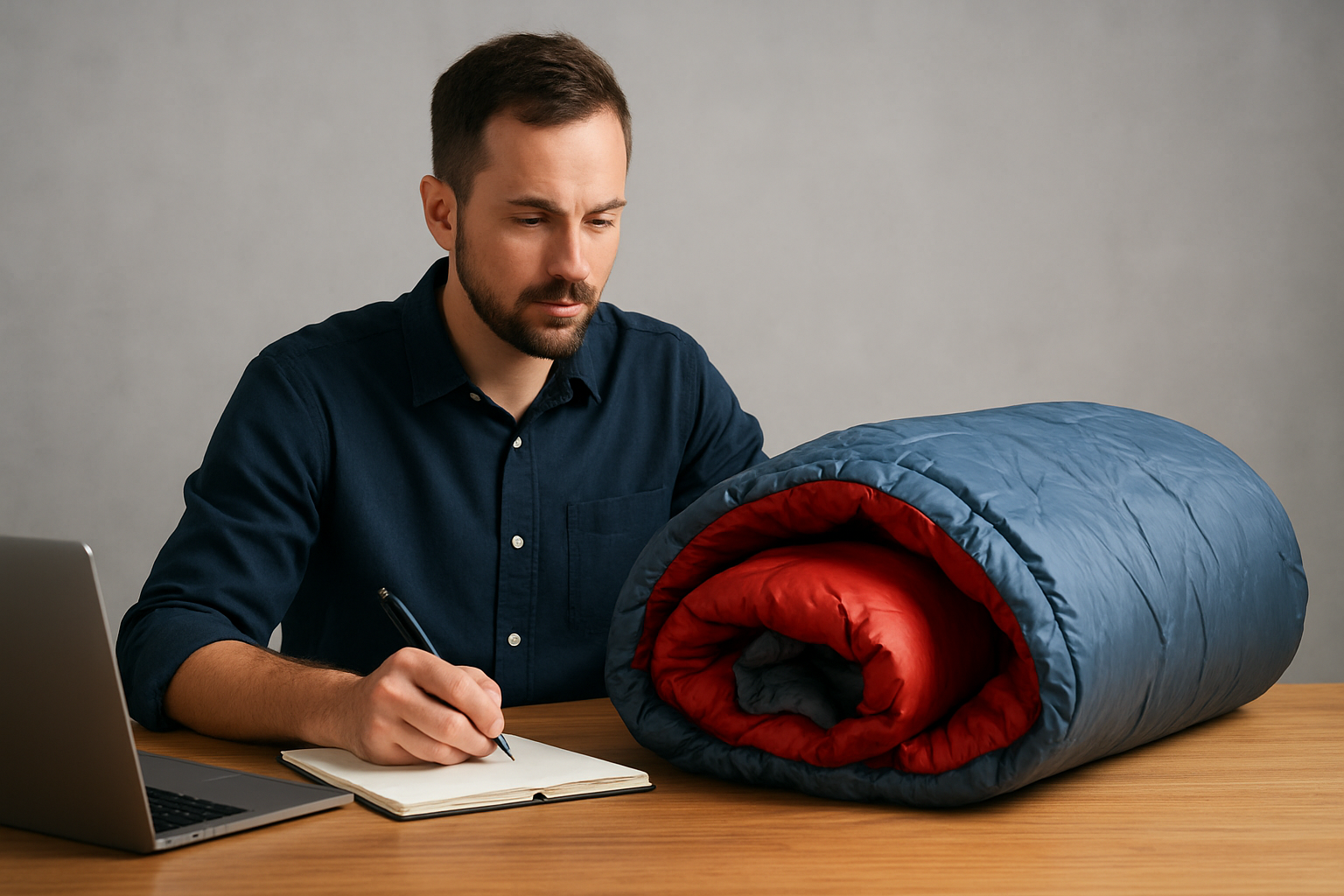
Backpacker Sleep exists to make your decision simple by connecting lab numbers to trail reality with clarity and care. Our comprehensive reviews on sleeping bags for various conditions include hands-on measurements of loft, true internal dimensions, zipper performance, and fabric hand, paired with controlled tests that replicate wind and humidity. We translate ISO [International Organization for Standardization] labels into plain guidance, discuss fit with real girth data, and model how pad R-value [thermal resistance value] shifts comfort so you can right-size warmth. We publish our test protocols and the Real Warmth Index methodology used to convert ISO/EN ratings into practical comfort ranges, and because we care about impact, we also spotlight RDS [Responsible Down Standard], GRS [Global Recycled Standard], and bluesign [bluesign system] credentials and explain when sustainable choices shine without compromising sleep.
| Metric | How We Measure | Why It Matters |
|---|---|---|
| True Temperature Feel | Field nights vs. ISO [International Organization for Standardization] tag under known wind and humidity | Bridges lab ratings with human comfort across conditions |
| Fit and Girth | Shoulder, hip, and footbox internal dimensions | Prevents cold gaps and compression that steals warmth |
| Pad Synergy | Heat-loss checks with multiple R-values [thermal resistance values] | Quantifies how much warmth the ground takes or gives back |
| Moisture Resilience | Timed drying and damp loft retention | Shows which bags recover fastest after inevitable wetting |
| Eco Credentials | Verification of RDS [Responsible Down Standard], GRS [Global Recycled Standard], bluesign [bluesign system], and PFC-free [perfluorinated compounds-free] DWR [durable water repellent] | Aligns purchase with values you can trust |
When you synthesize the guidance above, the path becomes clear and calm, like a well-marked trail through dusk. Identify your coldest expected night, choose an insulation type that thrives in your weather, match your pad R-value [thermal resistance value], and ensure the bag’s fit complements your body and sleep style. Backpacker Sleep’s role is to remove friction with structured reviews, side-by-side comparisons, and plain-English explainers, so your next purchase feels obvious rather than risky. With these tools, your bag becomes a reliable refuge that lets you wake up eager for the miles ahead.
Quick Buying Checklist You Can Screenshot
Use this brief checklist to pressure-test your pick before you click buy or head to the store. First, confirm your lowest realistic night temperature and select a bag with a Comfort rating at or 3 to 5 °F (≈1.5–3 °C) warmer than that low, adjusting for your hot or cold metabolism. Next, match a pad with sufficient R-value [thermal resistance value] for those lows, and evaluate fit in person if possible, testing shoulder and hip movement plus hood closure. Finally, decide on down or synthetic based on moisture risk, and favor RDS [Responsible Down Standard], GRS [Global Recycled Standard], bluesign [bluesign system], and PFC-free [perfluorinated compounds-free] DWR [durable water repellent] to align performance with values.
- Temperature plan: Comfort rating aligned to your coldest night with buffer.
- System match: Pad R-value [thermal resistance value] appropriate for target lows.
- Fit check: Girth, hood, draft collar, and zipper baffle pass the movement test.
- Moisture strategy: Down for dry, synthetic for wet or uncertain forecasts.
- Eco proof: Verified RDS [Responsible Down Standard], GRS [Global Recycled Standard], bluesign [bluesign system], and PFC-free [perfluorinated compounds-free] DWR [durable water repellent].
Everything we covered here flows into the next step, where Backpacker Sleep’s review library helps you map this framework to specific models and budgets. With clear tables, side-by-side comparisons, and scenario picks, you will spend less time decoding specs and more time packing chocolate for the summit. When you are ready, our comprehensive reviews on sleeping bags for various conditions will point you to a shortlist that truly fits your trip.
Final Thoughts Before You Head Out
The right sleeping bag is a system decision that turns cold, restless nights into steady, restorative sleep mile after mile. Imagine checking the forecast and knowing exactly which bag, pad, and simple habits will deliver the same cozy outcome every time, rain or frost. What would your season look like if gear decisions felt this calm and repeatable?
In the next 12 months, you could dial in your kit so precisely that trips feel like muscle memory, from alpine starts to misty valleys. Which setup from this blog post for 2025-11-10 will you test first, and how will you measure your new standard of comfort?
Master Your Blog Post For 2025-11-10 Gear Choices with Backpacker Sleep
Unlock comprehensive reviews on sleeping bags for various conditions and practical ISO [International Organization for Standardization]/lab guidance so backpackers, hikers, and camping enthusiasts make informed, comfortable choices.

